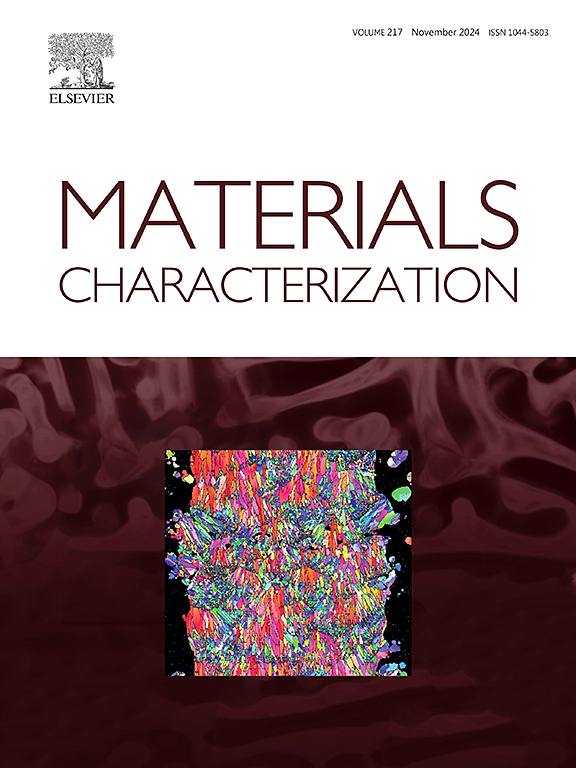用深度学习方法量化FFTF辐照HT9包层的线位错
IF 4.8
2区 材料科学
Q1 MATERIALS SCIENCE, CHARACTERIZATION & TESTING
引用次数: 0
摘要
晶体材料中的位错直接关系到材料的塑性变形和体力学性能。具体来说,这项工作的灵感来自于对微观结构位错信息的需求,以支持HT9铁素体/马氏体不锈钢的热蠕变模型。透射电子显微镜(TEM)可以直接揭示纳米尺度的位错;然而,获得准确的位错统计仍然是一个挑战。这种困难来自于TEM显微照片中复杂的对比机制和大量的微观结构特征,以及在广泛使用的手动标记方法中自然的人为偏见。初步的计算机视觉模型采用基于分割的神经网络,涉及多个步骤的人工操作和分析,往往不能有效地检测稀疏和碎片化的线位错。这项工作提出了一种基于端到端深度学习的方法,用于TEM显微照片中的多用途位错线检测。通过将位错视为边缘而不是裂缝或线条,我们设计了两个模块,使网络从一般的边缘检测适应于瞬变电磁法位错检测。具体来说,开发了一个校正模块,并将其集成到基本框架中,以增强TEM位错连续和非循环检测的特征分割。此外,在模型网络中嵌入后处理模块,以过滤冗余和重叠错位。然后使用该方法在未经测试的TEM显微图中以高精度自动生成位错位置和长度。该方法具有应用于高位错密度(约为1014 m−2)的TEM显微图的大型数据集的潜力。本文章由计算机程序翻译,如有差异,请以英文原文为准。
Quantification of line dislocations in FFTF irradiated HT9 cladding by deep learning method
Dislocations in crystalline materials are directedly linked to the plastic deformation and bulk mechanical properties in materials. Specifically, this work is inspired by the need for microstructural dislocation information to support a model for thermal creep of HT9 ferritic/martensitic stainless steel. Transmission electron microscopy (TEM) can directly reveal dislocations at nanoscale; however, deriving accurate dislocation statistics remains a challenge. This difficulty arises from the complex contrast mechanism and multitude of microstructural features in TEM micrographs, as well as the natural human bias in widely used manual labelling methods. Preliminary computer vision models, which employ segmentation-based neural networks and involve multiple steps of manual manipulation and analysis, often fail to detect sparse and fragmented line dislocations effectively. This work presents an end-to-end deep learning-based method for versatile dislocation line detection in TEM micrographs. By treating dislocations as edges rather than cracks or lines, we designed two modules to adapt the network from general edge detection to TEM dislocations detection. Specifically, a rectification module was developed and integrated into the basic framework to enhance the feature segmentation for continuous and non-cycle detection of TEM dislocations. Additionally, a post-processing module was embedded into the model network to filter out redundant and overlapping dislocations. The method was then used to automatically generate dislocation locations and lengths in untested TEM micrographs with high accuracy. This method has the potential to be applied to large datasets of TEM micrographs of high dislocations' density (in the order of 1014 m−2).
求助全文
通过发布文献求助,成功后即可免费获取论文全文。
去求助
来源期刊

Materials Characterization
工程技术-材料科学:表征与测试
CiteScore
7.60
自引率
8.50%
发文量
746
审稿时长
36 days
期刊介绍:
Materials Characterization features original articles and state-of-the-art reviews on theoretical and practical aspects of the structure and behaviour of materials.
The Journal focuses on all characterization techniques, including all forms of microscopy (light, electron, acoustic, etc.,) and analysis (especially microanalysis and surface analytical techniques). Developments in both this wide range of techniques and their application to the quantification of the microstructure of materials are essential facets of the Journal.
The Journal provides the Materials Scientist/Engineer with up-to-date information on many types of materials with an underlying theme of explaining the behavior of materials using novel approaches. Materials covered by the journal include:
Metals & Alloys
Ceramics
Nanomaterials
Biomedical materials
Optical materials
Composites
Natural Materials.
 求助内容:
求助内容: 应助结果提醒方式:
应助结果提醒方式:


